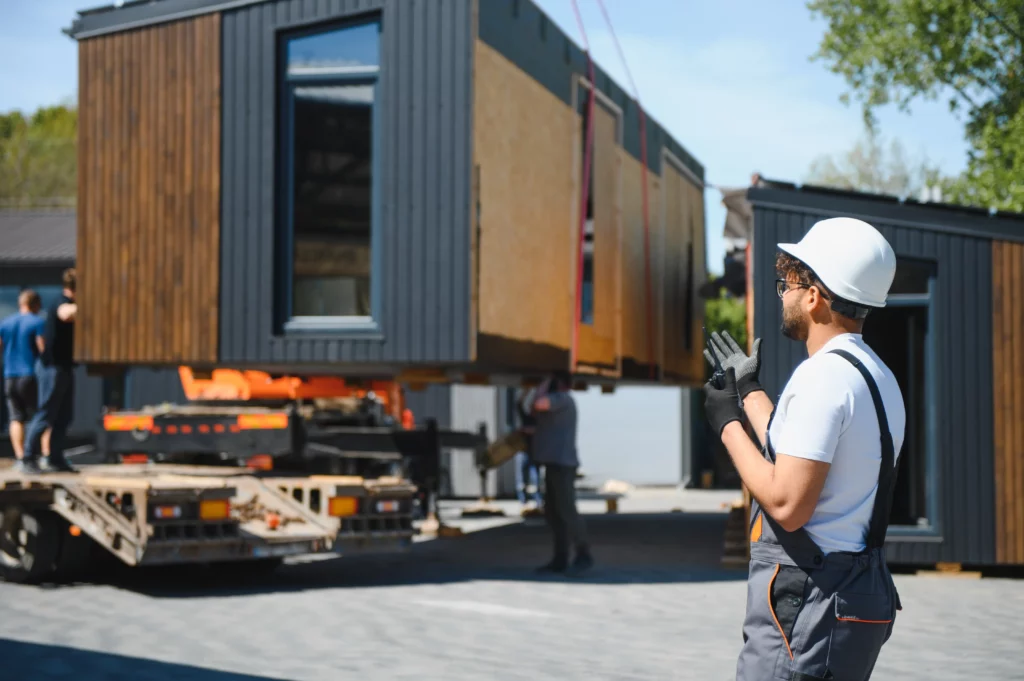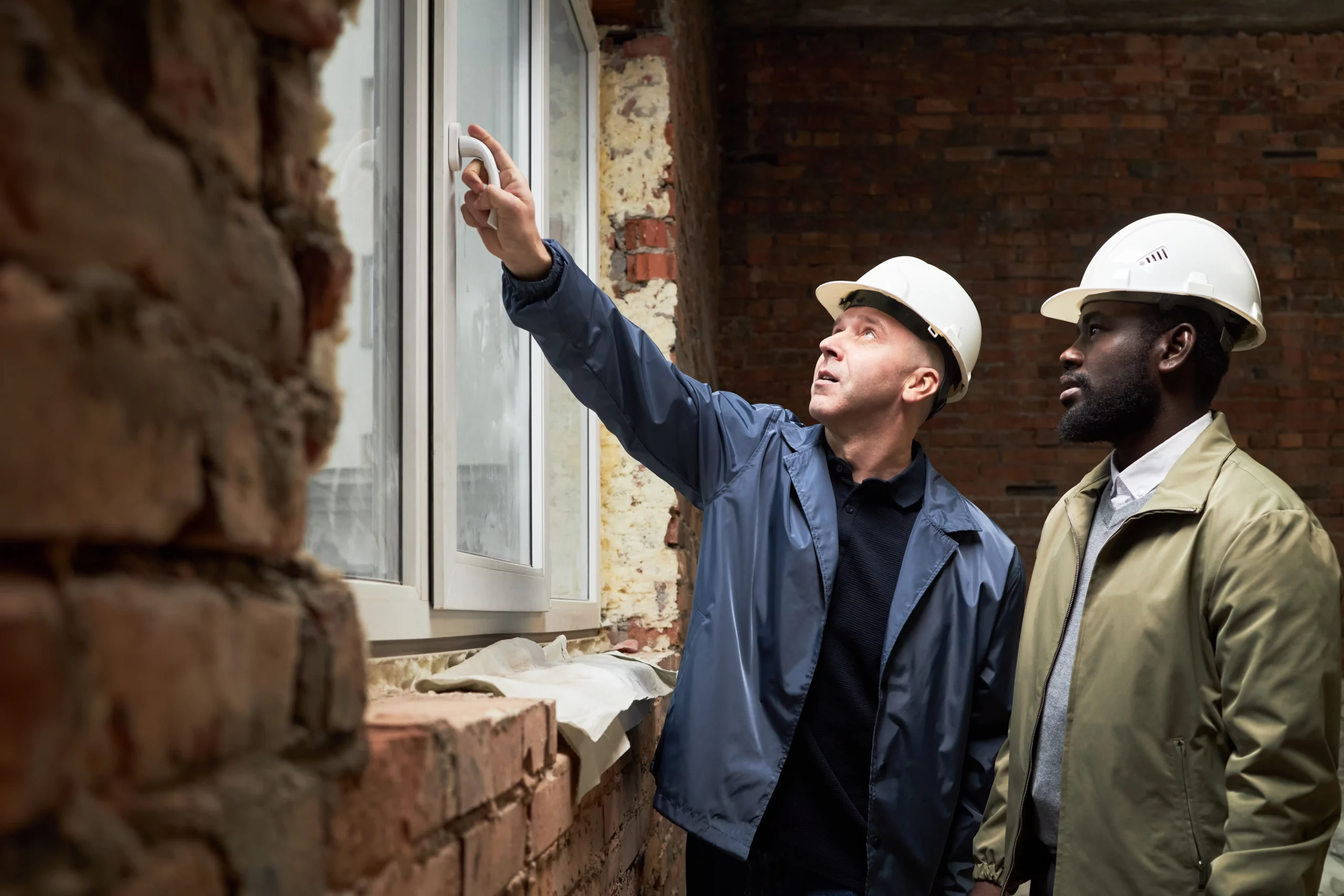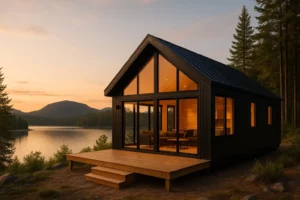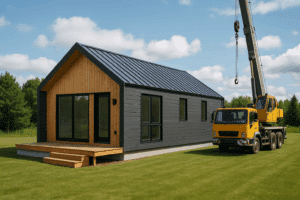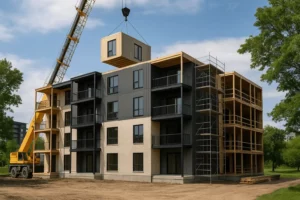A disaster, whether caused by water, fire, or mold, always disrupts the lives of those affected. When your home is impacted, the emotional shock is compounded by a practical emergency: you must act quickly to limit the damage, begin the insurance process, and, above all, prepare for renovations. But when it comes to a prefabricated home, this emergency takes on a particular dimension. These homes are often built from prefabricated components. factory prefabricated, These structures have unique characteristics that strongly influence how they should be renovated after a disaster. This article guides you step by step through the renovation process. prefabricated houses after a disaster, safely and efficiently.
Understanding what a manufactured home is
Before addressing the specifics of the post-disaster renovation, It is essential to understand what a manufactured home is. Unlike traditional homes built entirely on-site, manufactured homes (or prefabricated housesThese structures are largely assembled in a factory, then transported and erected on site. This construction method offers several advantages: speed of execution, increased quality control, and often better energy efficiency. However, in the event of a disaster, these characteristics can be compromised. complicate the repair if you don't know the right approaches.
Materials, insulation systems, mechanical assemblies, and even finishes are often standardized or manufacturer-specific. This means that renovating manufactured homes after a disaster requires precise knowledge of their structure and components. An error in the choice of materials or in the repair method can compromise not only the aesthetics, but also the structural integrity and energy performance of the building.
First step, secure and clean
As with any other dwelling, the first things to do after a disaster The goal is to limit the extent of the damage. This involves cutting off the electricity if water is present, ventilating the affected rooms, and above all, contacting a professional quickly. company specializing in post-disaster cleanup. In the case of a prefabricated house, this step is even more critical. Indeed, the walls and floors of these houses are often made of sandwich panels or multi-layered elements which, once wet, can retain moisture inside without it being visible to the naked eye.
Inadequate or superficial cleaning can therefore lead to the appearance of hidden mold, which will compromise indoor air quality and the health of the occupants. It is therefore essential to call upon professionals capable of using appropriate equipment. humidity detection equipment adapted to prefabricated structures. During this phase, you will also need to decide what you want to keep or discard from your damaged belongings. Be present during the cleanup; this is when you will have the most control over what is salvaged and what is discarded.
The importance of post-disaster inspection
Once the premises are secured and cleaned, comes the crucial step of post-disaster inspection. An expert appointed by your insurer (or an independent expert, depending on your preference) will assess the damage, determine the cause of the loss, and prepare a detailed report including photos, cost estimates, and recommendations. This report will serve as the basis for your compensation claim.
For manufactured homes, it is strongly recommended to choose an inspector who has experience with this type of construction. Damage does not always manifest itself in the same way as in a traditional home. For example, water infiltration can affect the joints between prefabricated modules, areas that are often vulnerable if they are not properly sealed. An experienced inspector will be able to identify these weak points and recommend the appropriate repairs.
Choosing the right contractor to renovate manufactured homes
One of the most important decisions after a disaster The choice of contractor who will carry out the work is yours. Although your insurer may suggest a partner contractor, you are not obligated to accept this offer. In fact, it is often best to request several quotes and compare their qualifications, timelines, and prices.
In the case of a manufactured home, choose a contractor with proven experience with the prefabricated houses. This type of professional will understand the specific characteristics of the materials used, know where to look for hidden damage, and can recommend solutions compatible with the original structure. This will prevent... costly mistakes and will guarantee a sustainable renovation.
Also be wary of contractors who insist that you sign a assignment of debt. This document transfers your reimbursement rights to the contractor, reducing your control over material choices, timelines, and the quality of the work. If you must sign such an agreement, ensure it includes a clear financial cap and monitoring clauses.
Decontamination, an often neglected step
In some cases, particularly after a flood or fire, your The house can be contaminated by mold., soot residues or other harmful substances. Before starting reconstruction work, a decontamination phase is essential.
Manufactured homes, with their often more airtight spaces and specific ventilation systems, can retain these contaminants longer than a traditional home. It is therefore crucial to use a company specializing in... post-disaster decontamination. These experts have the necessary equipment and products to deep clean without damaging sensitive materials often used in prefabricated houses.
Furthermore, some objects you thought were lost can be restored using drying and other techniques. professional cleaning. This can represent a significant saving and allow you to keep possessions to which you are attached.
Renovating: an opportunity to modernize
While a disaster is always a difficult experience, it can also be seen as an opportunity for a fresh start. When you renovate prefabricated houses after a disaster, You have the opportunity to correct old defects, opt for more durable materials, or even add energy-efficient features.
For example, take advantage of the renovation to improve wall or roof insulation, install high-performance windows, or integrate a more efficient ventilation system. These improvements not only increase the comfort of your home but may also allow you to benefit from tax credits or government subsidies.
Don't hesitate to discuss this with your contractor. A good professional will be able to advise you on the most suitable options for your type of house and your budget. Remember, you pay for your insurance, so you deserve it. a quality renovation that meets your expectations.
Successfully renovating your manufactured home after a disaster
Renovating after a disaster is never easy, especially when it involves a factory-built house. The unique structure of these dwellings demands a precise approach, qualified professionals, and heightened vigilance at every stage of the process. From initial cleaning to decontamination, including inspection and... choice of contractor after disaster, Every decision counts.
Don't rush into anything. Take the time to fully understand your options, compare quotes, and ask all the necessary questions. Your home deserves a renovation that not only erases the traces of the disaster but also makes it even stronger, healthier, and more comfortable to live in. By following this simple guide, you'll be better equipped to renovating manufactured homes after a disaster in an efficient, safe and sustainable manner.
Credits:
- Main image: Photo of sedrik2007, taken from Envato Elements, used under commercial license.
- Image 1: Photo of DragonImages, taken from Envato Elements, used under commercial license.
- Image 2: Photo of photovs, taken from Envato Elements, used under commercial license.
